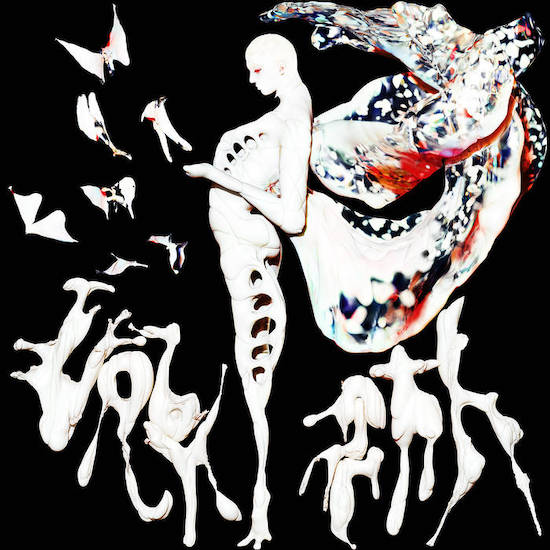Born in Japan and raised in Canada, Jesse Kanda has spoken about the effect complex identities can have upon those with dual-citizenship and ethnicity, stating that his “biggest fear … is not being understood, which is also loneliness: the sense of not belonging”. In his visual art he transposes otherness upon the very skin of people who spend their lives feeling like outsiders: attacking his own subjects; warping and cracking their shapes. On Labyrinth, his debut LP, he attempts to do the same with sound.
The style of production utilised by Kanda follows in the footsteps of James Ferraro, Oneohtrix Point Never and kin, some of this decade’s most pioneering electronic musicians who re-appropriated kitsch 8-bit motifs and the pre-set tones of budget keyboards to pastiche music made in service of commercial products. Unlike their work however, the style itself doesn’t seem to be the focus of Kanda’s: instead he uses those familiar sounds as touchstones to disrupt, in the way his painted work contorts the human face.
From Scott Walker to Peggy Lee, for decades popular music’s lyricists have flaunted their eccentricities by having fun within the bounds of their chosen genre. Here Kanda tries ambitiously to do the same without words, but his music does come unusually burdened by the shadow of association. He made his name creating artwork for FKA Twigs, Arca and Björk; not just other musicians working with similar themes but three of the most well-regarded. His visual material is also of astounding originality, dragging Dali-esque unearthliness into the digital realm. Labyrinth is strong, but dwarfed by connections to work which have made an indelible mark upon popular culture in a way this album likely won’t.
There is still substance to these compositions however: it’s an electronic, neo-gothic record which brims with strangeness and decay. ‘Natasya’ boasts a haunting melody which unfurls across an unforgiving synthetic beat; a stable foundation to be throttled and warped. The crisp mandolin on ‘Bunny’ is one example of the beauteous sound-play Kanda laces through these songs, providing satisfying counterpoint to the metric tempo of the hi-hats. ‘Garnet’ is eerier, crushing gorgeous cello chords under thick bass distortion – the sound of a loneliness which feels like a boot pressing down on the head. ‘Mono’ is the heart of the record however, both structurally and philosophically. Starting with an electro groove, the song soon collapses into a fragile and intricate piano passage: the widest space granted to an analogue instrument on the album. This sudden human presence in the middle of an electronic world resonates like a beating heart within the machine, remarkably capturing the melancholy of social isolation with sound.


